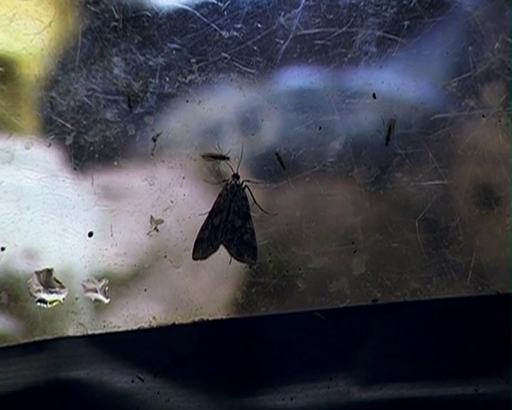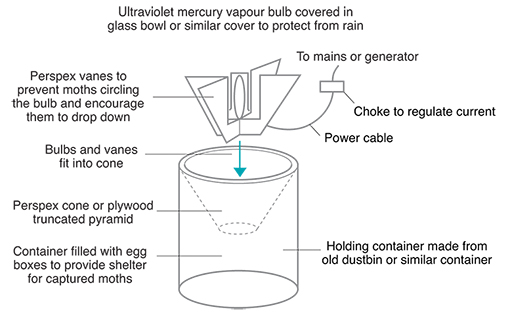3.2 Sampling flying insects
This video looks at a local volunteer who monitors moths.

Transcript: Video 6
Large day-flying insects such as butterflies may be caught in a butterfly net, identified and released, but since each insect needs to be stalked, these nets are not so useful for sampling. The number of insects caught is more dependent on the skill of the surveyor than on the number of insects in a population. However, where the identification of the insect is possible without capture, a transect method can be used, similar to the survey of dragonflies illustrated in the video at the beginning of this section.
Moths can be monitored using a light trap (Figure 14). Traps of the type used in the previous video can be run throughout the night and checked the following day.
Light traps are widely used for surveying night-flying insects. Traps that are run every night can provide species lists for a particular area and, more importantly, show changes in species diversity with the seasons and over the long term as annual records are compared.

